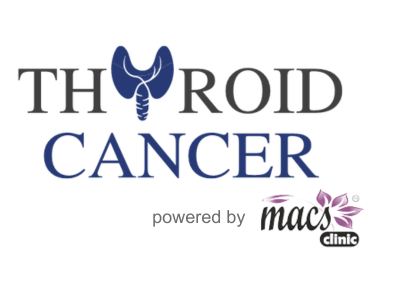When considering treatment options for thyroid nodules, Radiofrequency Ablation (RFA) and Robotic-Assisted Thyroid Surgery, such as RABIT (Robotic-Assisted Bilateral-axillo Insufflated Thyroidectomy), offer two cutting-edge approaches. Both methods provide innovative solutions for patients seeking effective, minimally invasive treatments, but they differ in technique, suitability, and outcomes. Let’s break it down to help you make an informed decision.
What is Radiofrequency Ablation (RFA)?
RFA is a minimally invasive, non-surgical procedure that uses thermal energy to reduce the size of benign thyroid nodules. Performed under local anesthesia, RFA involves inserting a thin, needle-like electrode into the nodule, guided by ultrasound. The electrode delivers heat to the nodule, shrinking it over time while preserving the surrounding thyroid tissue and function.
Key Benefits of RFA:
- No visible scars.
- Short recovery time (1–2 days).
- Thyroid function is preserved.
- Ideal for elderly patients or those who are not candidates for surgery.
What is Robotic-Assisted Thyroid Surgery (RABIT)?
RABIT is a scarless robotic surgical technique that removes thyroid nodules or part of the thyroid gland through small incisions made in the axilla (underarm) and/or breast area. The robotic system allows surgeons to perform precise, minimally invasive procedures with enhanced visualization and control. RABIT is particularly appealing to patients who prioritize cosmetic outcomes, as it avoids visible neck scars.
Key Benefits of RABIT:
- No neck scars (incisions are hidden in natural folds under the arm or breast).
- Highly precise surgical removal of nodules or thyroid tissue.
- Suitable for a wide range of thyroid conditions, including benign and some malignant nodules.
- Faster recovery compared to open surgery.
Comparing RFA and RABIT
| Feature | RFA | RABIT |
| Invasiveness | Minimally invasive, non-surgical (needle insertion only). | Minimally invasive surgery (small incisions in the underarm or breast area). |
| Scarring | No visible scars. | No visible scars (incisions hidden in underarm/breast folds). |
| Anesthesia | Local anesthesia. | General anesthesia (required for robotic surgery). |
| Recovery Time | 1-2 days (quick return to daily activities). | 1-2 weeks (shorter than traditional open surgery but longer than RFA). |
| Preservation of Thyroid Function | Preserves thyroid tissue and function. | May involve partial or total removal of thyroid tissue, which can impact thyroid hormone levels. |
| Treatment Scope | Best for benign, non-cancerous nodules (solid or predominantly solid). | Suitable for benign nodules and some malignant nodules (e.g., micropapillary thyroid carcinoma). |
| Repeat Procedures | May require multiple sessions for larger nodules (>4 cm). | Typically a one-time procedure (complete removal of the nodule or affected thyroid tissue). |
| Suitability | Ideal for patients with benign nodules who want a non-surgical option. | Suitable for patients who require surgical removal and prioritize scarless outcomes. |
| Cost | Generally less expensive than robotic surgery. | Higher cost due to advanced robotic equipment and surgical expertise. |
When Should You Choose RFA?
RFA is an excellent option if:
- You have benign thyroid nodules that are causing symptoms (e.g., difficulty swallowing, cosmetic concerns).
- You want to avoid surgery and preserve your thyroid gland.
- You prefer a short recovery time and minimal downtime.
- You are not a good candidate for surgery due to age, medical conditions, or personal preference.
However, RFA is not suitable for:
- Malignant thyroid nodules or nodules with suspicious features.
- Cystic nodules (these respond better to other treatments, such as ethanol ablation).
- Nodules causing severe tracheal compression, where surgery is often the preferred option.
When Should You Choose RABIT?
RABIT is a great choice if:
- You require removal of the thyroid nodule or part of the thyroid gland due to its size, symptoms, or malignancy risk.
- You prioritize a scarless cosmetic outcome (especially for visible neck areas).
- You are comfortable undergoing a surgical procedure under general anesthesia.
- You are looking for a one-time treatment with a highly precise outcome.
RABIT may not be ideal for:
- Patients who are not suitable for surgery due to health concerns or anesthesia risks.
- Patients with very small or asymptomatic nodules, where less invasive options like RFA suffice.
Which Option is Right for You?
The choice between RFA and RABIT depends on several factors, including the size, type, and location of your thyroid nodule, as well as your personal preferences and overall health. Here are some general guidelines:
- Choose RFA if you want a non-surgical, quick-recovery option for treating benign nodules without affecting your thyroid function.
- Choose RABIT if you need surgical removal of a nodule or part of your thyroid and want to avoid visible scars on your neck.
Final Thoughts
Both RFA and RABIT represent significant advancements in the treatment of thyroid nodules, offering effective alternatives to traditional open surgery. While RFA is ideal for patients seeking a non-surgical, minimally invasive option for benign nodules, RABIT provides a scarless surgical solution for those requiring nodule removal. Consulting with a thyroid specialist can help you determine which option best aligns with your medical needs and personal goals.
If you have questions about RFA or RABIT, or if you’d like to explore treatment options further, reach out to your healthcare provider to discuss the best approach for you.
